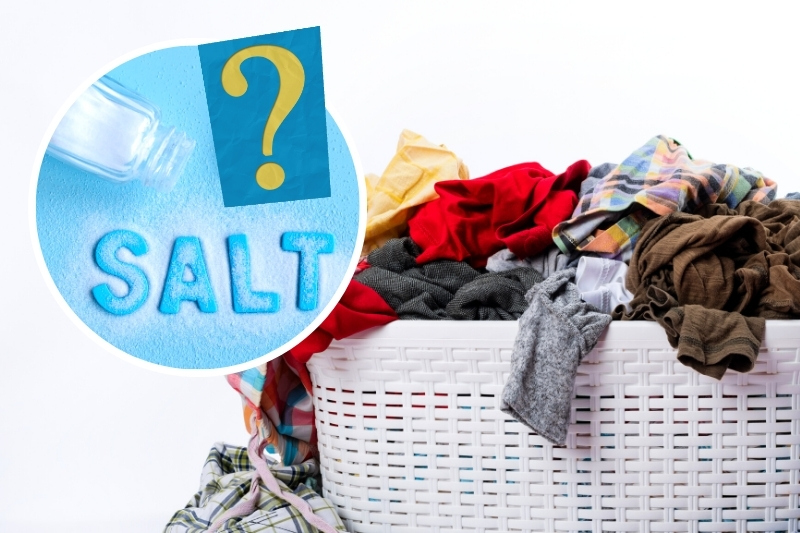Good ol’ salt has been used to season and preserve food for years, and it can also be used in the cleaning and laundry world!
But there’s one pressing concern with using salt to treat laundry: will salt damage clothes?
Generally speaking, salt is quite a harmless ingredient. If used correctly, salt shouldn’t destroy or damage your fabrics.
However, as is the case with any cleaning product, if you don’t use the salt properly, you run the risk of damaging your clothing.
You should always use salt with caution, as it can occasionally spoil some materials, particularly delicate ones, but more on this below!
Will Salt Damage My Clothes?
Salt’s naturally abrasive nature makes it ideal for treating tough stains, softening laundry, removing greasy substances from fabric surfaces. It can also help to enhance your outfits’ colours.
It’s super easy to get hold of salt, and most of us have a tub of it in the cupboard at home already, which is why it has become a go-to type of stain remover over the years!
Nevertheless, salt, like other products used in laundry, has its downsides and should always be used with care.
Below are some of the problems you might face when using salt on clothes. Keep in mind that if you use salt wisely, you shouldn’t face these issues.
A salty residue can get left behind on materials
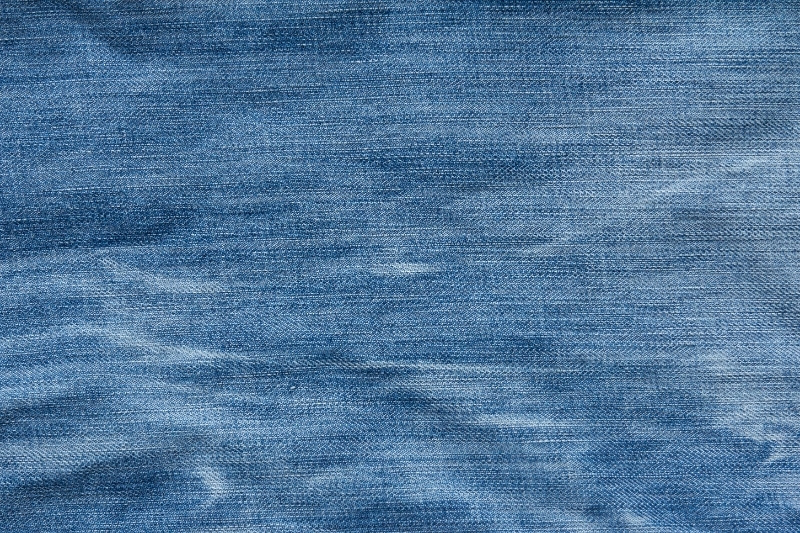
Salt goes great with a bit of cod and chips, but it doesn’t necessarily have the same effect when it’s left on clothes for too long.
If you don’t rinse your clothes thoroughly at the end of a salt treatment, they can feel quite stiff and have a white residue on them.
This effect can occur on both hard-wearing and delicate materials, although the impact is generally worse on finer materials, like silk and wool.
If salt is left on fabrics for too long, they become quite crunchy to the touch, and the garment’s colours might’ve even started to fade a little. This is likely caused by the salt’s abrasive nature not agreeing with the fabric’s fibres.
As a rule, you must make sure that any salty remnants are cleaned off all your items after they’ve been treated with salt. So, you might have to pop your clothes through a second rinse cycle if you see salty stains on your garments.
Fibres weaken when exposed to salty water

Salt is a quick stain remover that’s simple to use. Nonetheless, you’ve got to make sure that you don’t over-soak your laundry in a salty mixture.
Soaking clothes, delicate or otherwise, in salt water for prolonged periods of time can weaken the material in question.
In turn, this can make some fabrics overly crunchy, delicate materials may disintegrate when exposed to too much salt for a lengthy period of time, and in some cases, fabrics can shrink.
It’s important that you rinse your clothes properly after they’ve been exposed to salt!
Interestingly, this is why you see people who’ve been swimming in the sea rinsing their trunks and bikinis under a fresh cold water tap after they’ve been for a swim! They don’t want the salt to damage their swimsuits.
Using too much salt is counterproductive
When using salt to treat an item of clothing you’ve got to keep in mind that moderation is key.
So, don’t pour lashing of salt into a bucket or drown a stain in salt! You must stick to the dose that’s stipulated in the cleaning method you’re using.
If you don’t keep to the dose you’ve been told to use you run the risk of damaging your clothes.
For example, your clothes may become weak, a salty residue may be left behind on them, or items may be discoloured.
Salt can discolour colourful fabrics
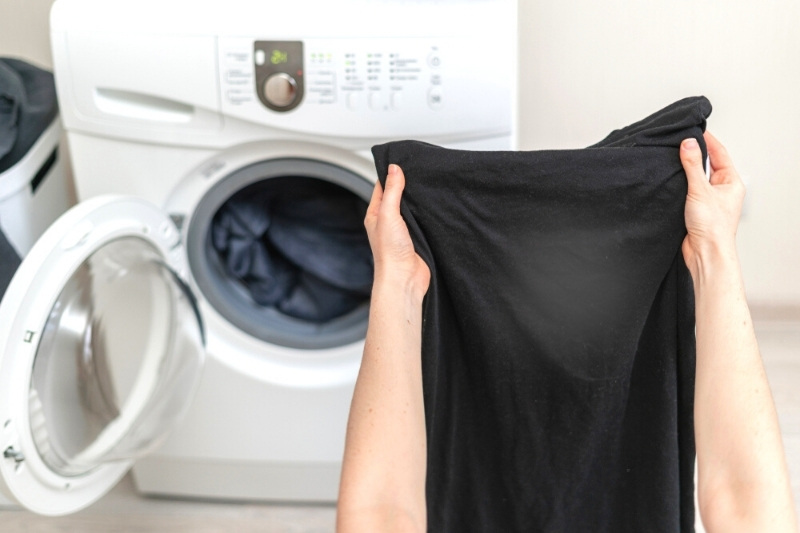
Although salt can be used to enhance or lock-in the colours of some outfits, it can have the reverse effect with some clothes.
Salt can sometimes cause colours like red and navy to fade, which is why it’s key to make sure that you dilute your salt properly before you use it to treat said coloured clothes.
In addition to this, you should try to avoid soaking these types of colours in a salty mixture for prolonged periods as this can encourage fading or patchy dulling.
Salt can make some stains worse
If you don’t follow a set of cleaning instructions properly when treating a stain on an item, and instead you go overboard with the salt, you use hot water, or you don’t use the correct amount of salt you run the risk of damaging your garments.
In some cases, if you don’t stick to the cleaning method you were given, you might end up treating the outfit with salt, but during the cleaning process you may accidentally set the stain instead of removing it. In turn, the blemish might be even harder to eradicate!
Salt can dry out certain materials
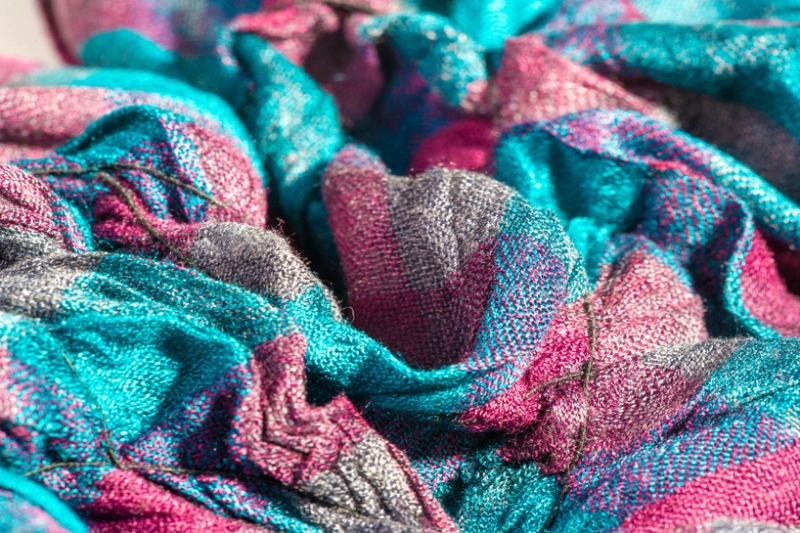
As mentioned above, certain materials like silk and wool may not react well when treated with salt, and they can become very crunchy or weak.
However, there are other materials, like suede and leather that also don’t fare well when exposed to salt.
When leather and suede are treated with a salty mixture, they become dried out and this can make the materials quite brittle.
In turn, the materials in question can weaken, and if they’re exposed to too much salt on a regular basis, they will eventually start to break down.
As a guide, you should avoid using salt around suede and leather.
Can Salt Water Stain Clothes?
Yes, salt water can potentially stain clothes. This issue is most likely to occur if you’ve misused the salt when trying to treat/clean your clothes.
For example, you’ve used too much salt to treat your laundry, you haven’t rinsed the salt off your clothes, or you’ve tried to clean a delicate type of material with salt.
In general, if you use a small amount of salt, dilute it properly in liquid, and rinse your clothes after they’ve been exposed to a salty mixture, you shouldn’t have many salt-based stains to deal with.
How to Safely Use Salt to Treat Clothes
Salt, when used correctly, can be quite a handy tool to have in your cleaning box. Here are some helpful tips to keep in mind when using salt on clothes.
It’s worth keeping these points in mind because if you don’t consider them, you run the risk of ruining your outfits!
1. Do a patch test first
Got a few concerns with using salt to treat your laundry? You’re not alone!
A very simple way to quash your worries is to do a small patch test with the salt before you use it to ‘officially’ treat your item of clothing.
Simply find a discreet patch of clothing (usually an inner seam), dab some diluted salt water onto it, and see what happens over the course of a few hours.
If you don’t see any issues, you can continue to treat your item with salt, but you can stop what you’re doing and rinse your item if problems do arise.
2. Use a small amount of salt
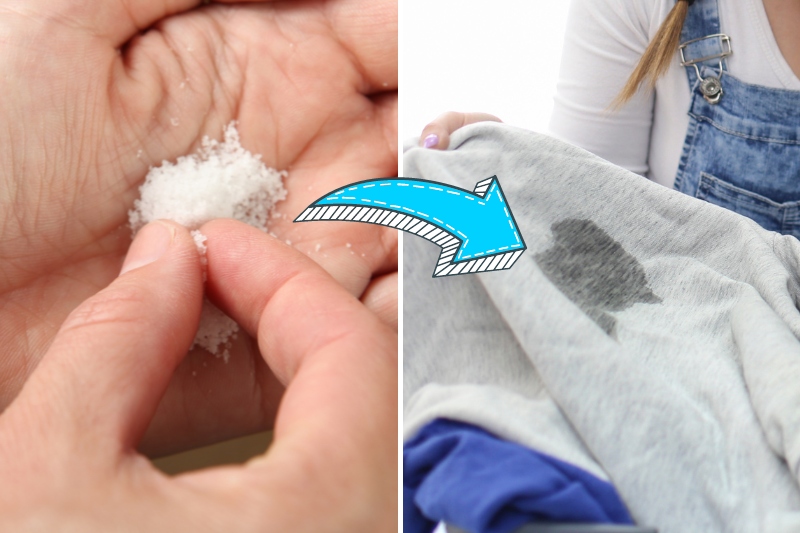
It’s always better to use a small amount of salt to treat an item of clothing. And if need be, you can add a touch more salt here and there as you continue to clean your garment.
If you stick to using a little amount of salt, there’s less risk of you oversaturating your item in the abrasive ingredient, and in turn, your outfit won’t experience any salt-related damages.
3. Always dilute salt before using it
Salt, like many other ingredients, should be diluted in water or another liquid before it’s used on a piece of material.
By diluting the salt, you get to treat your clothes with a less concentrated version of the product, which is usually better for the material you’re handling.
4. Rinse clothes properly after they’ve been treated

After treating an item of clothing with salt, you should rinse it under the cold water tap.
This will stop a build-up of salty residue from appearing on your clothes. Plus, by rinsing all the salt off you stop your clothes from becoming crunchy!
5. Don’t leave clothes to rest in salt water for prolonged periods
A lot of cleaning methods stipulate that you should leave clothes to soak in salt water overnight. But if you’re worried about doing this, cut the time in half or even in quarter!
Remember that you can always start off by leaving your laundry to soak in salt water for a small amount of time, and build up from there.
For example, start with thirty minutes, move onto an hour and so on.
Just make sure the salt isn’t having a negative effect on the material during this time! And if you do see any adverse effects, remove your item from the water immediately and rinse it under the cold water tap, so you dislodge all the salty remnants from the fabric’s fibres.
Check out our guide to soaking clothes in salt water for some more tips.
6. Use an alternative to salt if you’re not sure
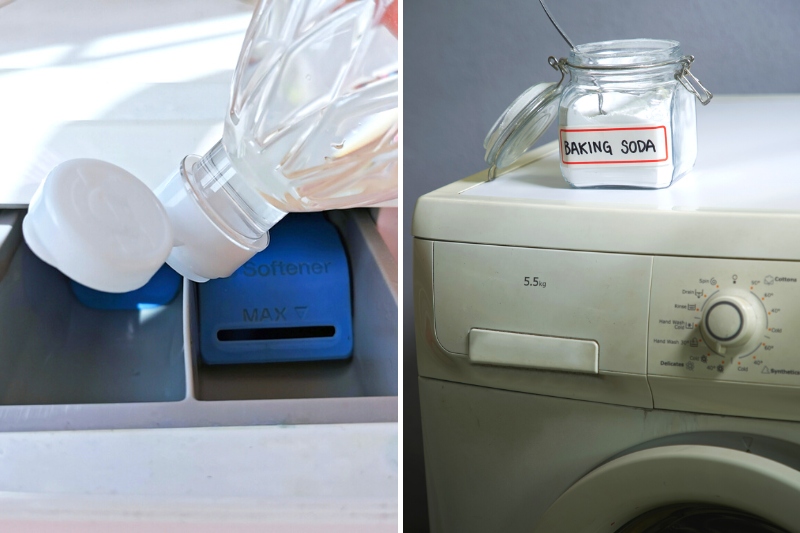
Using salt to treat clothes is generally a straightforward process, but it’s not for everyone.
So, if you’re concerned about using salt to treat a stain or to brighten your load of laundry, don’t use it. Instead, use an alternative.
There are plenty of natural and off-the-shelf products you can buy in and use to help you with said issues, for example, vinegar and bicarbonate of soda!

Bethan has a passion for exploring, reading, cooking and gardening! When she’s not creating culinary delights for her family, she’s concocting potions to keep her house clean!
